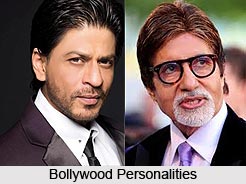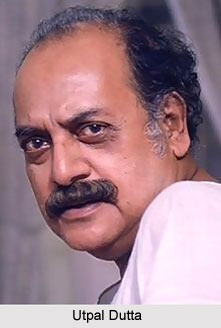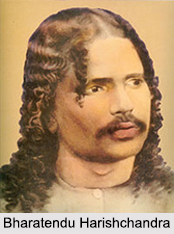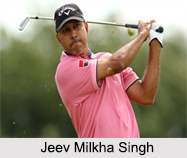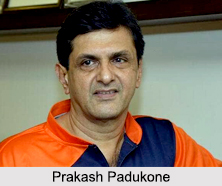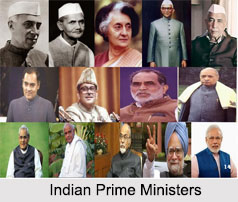 List of Presidents of India includes the names of eminent personalities who have led the country with their dedication, determination, knowledge and experience. The Indian President is the head of state and first citizen of the nation. He is the Commander-in-Chief of the Indian armed forces as well. The role of the Indian President is largely ceremonial, with real executive authority vested in the Council of Ministers, headed by the Prime Minister. The designation of the Indian President is also known as Rashtrapati in Hindi. The President is elected by an electoral college which is composed of elected members of the parliament houses, Lok Sabha and Rajya Sabha, as well as the members of the Vidhan Sabha, the state legislative assemblies.
List of Presidents of India includes the names of eminent personalities who have led the country with their dedication, determination, knowledge and experience. The Indian President is the head of state and first citizen of the nation. He is the Commander-in-Chief of the Indian armed forces as well. The role of the Indian President is largely ceremonial, with real executive authority vested in the Council of Ministers, headed by the Prime Minister. The designation of the Indian President is also known as Rashtrapati in Hindi. The President is elected by an electoral college which is composed of elected members of the parliament houses, Lok Sabha and Rajya Sabha, as well as the members of the Vidhan Sabha, the state legislative assemblies.
Since the introduction of the designation in the year 1950, 15 Indian Presidents have been appointed todate. The position was established after the nation was declared as a republic with the implementation of the Constitution of India. Apart from the 15 Presidents, 3 Acting Presidents have also served in office for brief periods. At present, the President of India is Droupadi Murmu, an Indian politician and former teacher. Besides being the 15th President of the Government of India, she is also the second female to hold this prestigious position of the nation. Droupadi Murmu was preceded by Ram Nath Kovind, the 14th President of India, an Indian politician and currently the member of Bhartiya Janata Party.
A List of Presidents of India in chronological order is provided as follows-
Rajendra Prasad
Dr. Rajendra Prasad was the first President of Independent India. As the first President, he was independent and unwilling to allow the Prime Minister or the party to seize his constitutional rights. However, following the conflict over the passing of the Hindu Code Bill, he restrained his stand. Prasad set several important rules for later Presidents to follow. He had also served as President of the Constituent Assembly that drafted the constitution of the Republic from 1948 to 1950.
Sarvepalli Radhakrishnan
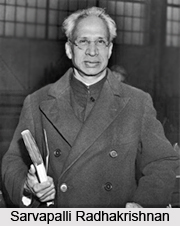 Sarvapalli Radhakrishnan was born on September 5, 1888. He was a philosopher and statesman. He became Vice President of India in 1952 and was elected President in 1962. He held office until 1967. In India, his birthday is celebrated as Teacher`s Day in his honour. Radhakrishnan was one of the first scholars of comparative religion and philosophy in his time; he built a bridge between Eastern and Western thoughts showing each to be understandable within the terms of the other. Radhakrishnan introduced Western ideas into Indian philosophy and was the first scholar of importance to provide a comprehensive exegesis of India`s religious and philosophical literature to English speaking people. Radhakrishnan died on April 17, 1975
Sarvapalli Radhakrishnan was born on September 5, 1888. He was a philosopher and statesman. He became Vice President of India in 1952 and was elected President in 1962. He held office until 1967. In India, his birthday is celebrated as Teacher`s Day in his honour. Radhakrishnan was one of the first scholars of comparative religion and philosophy in his time; he built a bridge between Eastern and Western thoughts showing each to be understandable within the terms of the other. Radhakrishnan introduced Western ideas into Indian philosophy and was the first scholar of importance to provide a comprehensive exegesis of India`s religious and philosophical literature to English speaking people. Radhakrishnan died on April 17, 1975
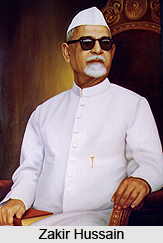 Zakir Hussain
Zakir Hussain
Zakir Hussain was born on February 8, 1897 and died on May 3, 1969. He was the third President of India and served in office from May 13, 1967 until his death on 3 May 1969. He was the first elected Muslim president of India. Hussain was born in Hyderabad. After serving as the Governor of Bihar from 1957 to 1962, Zakir Hussain became the Vice President of India from 1962 to 1967. In his inaugural speech, he said that the whole of India was his home and its entire people were his family.
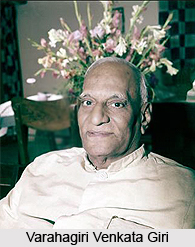 Varahagiri Venkata Giri
Varahagiri Venkata Giri
Varahagiri Venkata Giri was born on August 10, 1894 and died on June 23, 1980. He was appointed as the Acting President of India on 3 May 1969 after the death of Zakir Hussain. He resigned after a few months on 20 July 1969 and decided to participate in the presidential elections. Giri received India`s highest Civilian Award, the Bharat Ratna in 1975 for his contributions in the area of public affairs. He was a prolific writer and a good orator. He was elected as Vice-president of India in 1967.
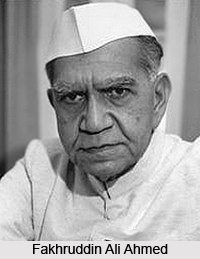 Muhammad Hidayat Ullah
Muhammad Hidayat Ullah
Muhammad Hidayatullah was born on December 17, 1905 and died on September 18, 1992. He served as Acting President of India until Varahagiri Venkata Giri was elected as the President of India. He served in office from 20 July 1969 to 24 August 1969.He was the second Muslim to hold the post. Hidayatullah was succeeded by the previous President, Varahagiri Venkata Giri. He was the first Muslim Chief Justice of India from January 1968 to February 1970. He was also Vice-President of India from August 1979 to August 1984. A National Law University has been established in Hidayatullah`s name at Jodhpur.
Varahagiri Venkata Giri
Varahagiri Venkata Giri was the fourth President of the Republic of India from August 24, 1969 to August 23, 1974. He was the only person to have served as both an Acting President and President of India. During the elections, the Congress Party led by Indira Gandhi chose to support Neelam Sanjiva Reddy for the position, but he was able to prevail anyway due to a last-minute change in the decision by Indira Gandhi, he served until 1974. He has served the office Twice as President.
Fakhruddin Ali Ahmed
Fakhruddin Ali Ahmed was elected as the fifth President of India and served in office from August 24, 1974 to his last day that is February 11, 1977. Fakhruddin Ali Ahmed was born on May 13, 1905 and died on February 11, 1977. He was educated at St. Stephen`s College and St Catharine`s College, Cambridge and subsequently became an active member of the Congress Party. Ahmed was chosen for the presidency by Prime Minister Indira Gandhi in 1974, becoming the third Muslim President in Delhi. He would later use his constitutional authority as head of state to allow her to rule by decree once emergency rule was proclaimed in 1975. Fakhruddin Ali Ahmed He was the second Indian president to die in office.
Basappa Danappa Jatti
Basappa Danappa Jatti was sworn in as the Acting President of India after the death of Fakhruddin Ali Ahmed on 11 February 1977. Jatti was appointed as the Acting President of India from 11 February 1977 and served in the position till 25 July 1977. Basappa Danappa Jatti was born on September 10, 1912 and died on June 7, 2002.Jatti graduated as a lawyer from Sykes Law College, Kolhapur and became a leader in Jamakhandi. After the 1952 general elections, he was appointed Minister of Health and Labour of the then Bombay (now Mumbai) Government. Re-elected from Jamkhandi constituency in the third general elections, Jatti was appointed Finance Minister on July 2, 1962 in the Nijalingappa Ministry. He became acting President for a brief period after the death of Fakruddin Ali Ahmed.
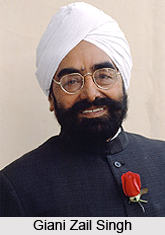 He became acting President for a brief period after the death of Fakruddin Ali Ahmed.
He became acting President for a brief period after the death of Fakruddin Ali Ahmed.
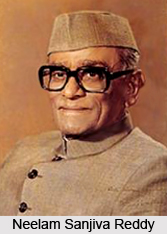 Neelam Sanjiva Reddy
Neelam Sanjiva Reddy
Neelam Sanjiva Reddy was elected as the sixth President of India and he served in office from July 25, 1977 to July, 25 1982. He was the only individual to be elected President unopposed. Neelam Sanjiva Reddy was born on May 19, 1913 and died on June 1, 1996. He was also Union Minister of Transport, Civil Aviation, Shipping and Tourism from January 1966 to March 1967 in the Cabinet. Reddy was elected to the Lok Sabha from Hindupur constituency in Andhra Pradesh. He was elected Speaker of Lok Sabha on March 17, 1967, where he won unprecedented acclaim and appreciation. Neelam Sanjiva Reddy was elected President by the Electoral College in July 1977.
Giani Zail Singh
Giani Zail Singh was appointed as the seventh President of India. He served in the position from 25 July 1982 till 25 July 1987. Giani Zail Singh was born in Punjab on May 5, 1916 and died on December 25, 1994. He was the President of India from 1982-1987, and the first Sikh to hold India`s highest public office and honour. Giani Zail Singh was elected to the highest office of the President of India on July 15, 1982. He was criticized for his dominating attitude towards the Prime Minister, Indira Gandhi. His relation with Rajiv Gandhi, the next Prime Minister, was rocky at best.
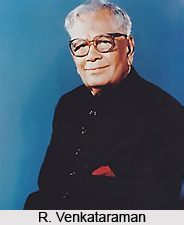 R. Venkataraman
R. Venkataraman
Ramaswamy Venkataraman, born on December 4, 1910, was the 8th President of the Republic of India, serving from 25 July 1987 to 25 July 1992. Before his election as President, Venkataraman served nearly 4 years as the 7th Vice-President. Although re-elected to Parliament in 1957, Venkataraman resigned his seat in the Lok Sabha to join the State Government of Madras (now Chennai) as a Minister. There Venkataraman held the portfolios of Industries, Labour, Cooperation, Power, Transport and Commercial Taxes from 1957 to 1967. During this time, he was also Leader of the Upper House, namely, the Madras Legislative Council. Venkataraman died at the Army Research and Referral Hospital, New Delhi on 27 January 2009.
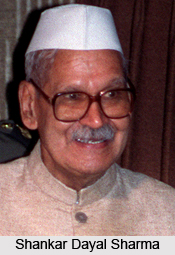 Shankar Dayal Sharma
Shankar Dayal Sharma
Shankar Dayal Sharma was elected as the ninth President of India from 25 July, 1992 to 25 July, 1997. He was born on August 19, 1918 and died on December 26, 1999. Sharma served as Vice-President until 1992, when he was elected President. During his 5-year term, he was active in ceremonial matters and was in charge of dismissing and appointing governors. During his last year as President, it was his responsibility to swear in 3 prime ministers.
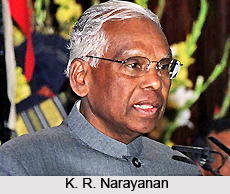 K. R. Narayanan
K. R. Narayanan
Kocheril Raman Narayanan served as the tenth President of India. He was the first Malayali and the first Dalit to have been Indian President. He served in office from 25 July, 1997 to 25 July, 2002. Narayanan was born on 27 October 1920 and died on 9 November 2005. He was also known as K. R. Narayanan. K. R. Narayanan was elected as the President of India on 17 July 1997 with 95% of the votes in the Electoral College, from the Presidential poll 14 July.This is the only Presidential election to have been held with a minority government holding power at the centre.
Dr. A.P.J. Abdul Kalam
Avul Pakir Jainulabdeen Abdul Kalam Maraikkayar is an Indian scientist and administrator. Dr. A.P.J. Abdul Kalam served as the 11th Indian President. He served in the designation from 25th July, 2002 to 25th July, 2007.Kalam was born on October 15, 1931, Tamil Nadu, India. A notable scientist and engineer, he is often referred to as the Missile Man of India for his work and is considered a leading progressive, mentor, innovator and visionary in India.
Pratibha Patil
Pratibha Devisingh Patil served as the 12th President of India and was sworn in on 25 July, 2007. She was the first woman and first Maharashtrian to hold the post. The Chief Justice of India K. G. Balakrishnan had sworn her as President of India on July 25, 2007. Pratibha Patil obtained her Master`s degree in Political Science and Economics from Mooljee Jetha College, Jalgaon. Later she completed her Bachelor`s degree in Law Government Law College, Mumbai. Patil was an elected Member of Parliament in the tenth Lok Sabha and represented the Amravati constituency. Pratibha Patil is a member of Indian National Congress and the first female Governor of Rajasthan. She retired from the position of Indian President in July 2012.
Pranab Mukherjee
Pranab Kumar Mukherjee is the 13th President of the Republic of India. He was appointed in the post on 25 July, 2012. He was amongst the senior members of the Cabinet Committees on Political Affairs, Parliamentary Affairs, Economic Affairs, Security, Infrastructure, World Trade Organization etc. until he resigned from his political office for the Presidential election. Pranab Mukherjee also led the assembly of Ministers that probes the assumed corruption of the earlier National Democratic Alliance government.
Ram Nath Kovind
Ram Nath Kovind, born on October 1, 1945, served as the 14th President of India from July 25, 2017, to July 25, 2022. Prior to his presidency, Kovind had an illustrious career in Indian politics and law. A lawyer by profession, he practiced in the Delhi High Court and the Supreme Court of India. Kovind was a member of the Rajya Sabha, the upper house of the Indian Parliament, for two terms. During his presidency, he focused on key issues such as education, healthcare, and the welfare of marginalized communities. Kovind`s tenure saw the launch of various initiatives, including the Swachh Bharat Abhiyan and the Pradhan Mantri Jan Dhan Yojana, aimed at social and economic development. His dedication to public service and commitment to inclusive growth left a lasting impact on India`s governance.
 Droupadi Murmu
Droupadi Murmu
Droupadi Murmu, born on June 20, 1958, is currently serving as the 15th President of. She assumed office from July 25, 2022. She is the second female president of India and the first Adivasi woman to hold the esteemed position. Murmu is also the youngest person to occupy the position in its history and the first President born in Independent India. Droupadi Murmu has earlier served as the 8th Governor of Jharkhand from 2015 to 2021. From 2000 to 2009, she has been a member of the Odisha Legislative Assembly from Rairangpur Assembly constituency and from 2000 to 2004, served as the Minister of State (Independent Charge), Government of Odisha. Before starting her political career, Murmu was a clerk in the State Irrigation and Power Department (1979 to 1983), and then a teacher in Rairangpur, Odisha.
